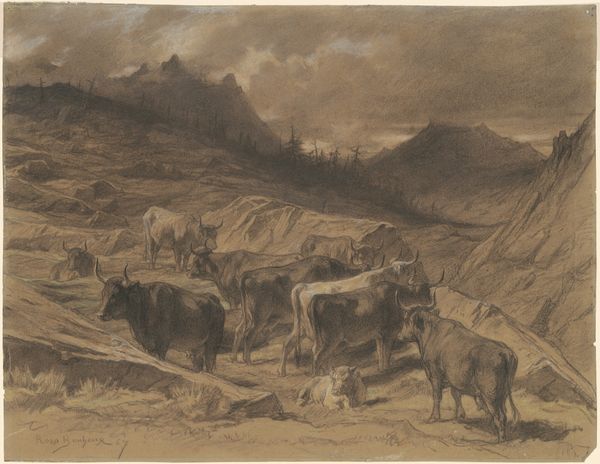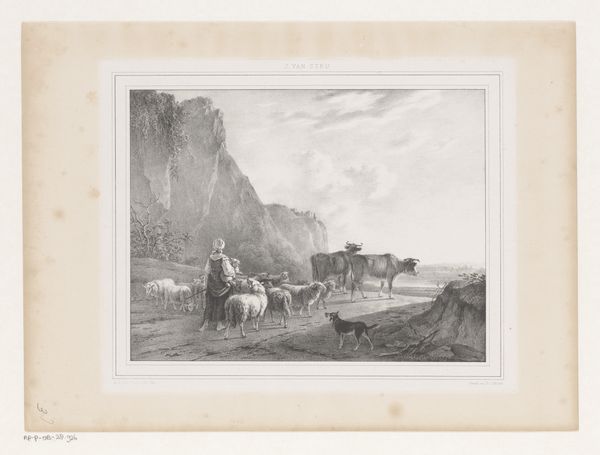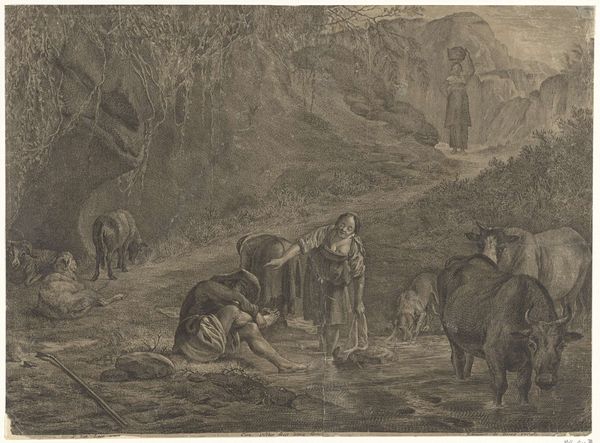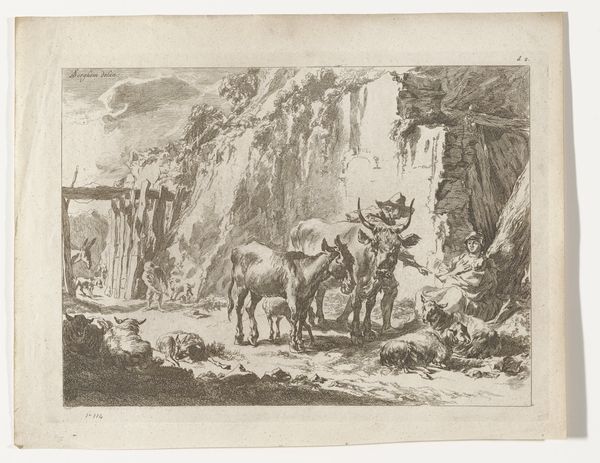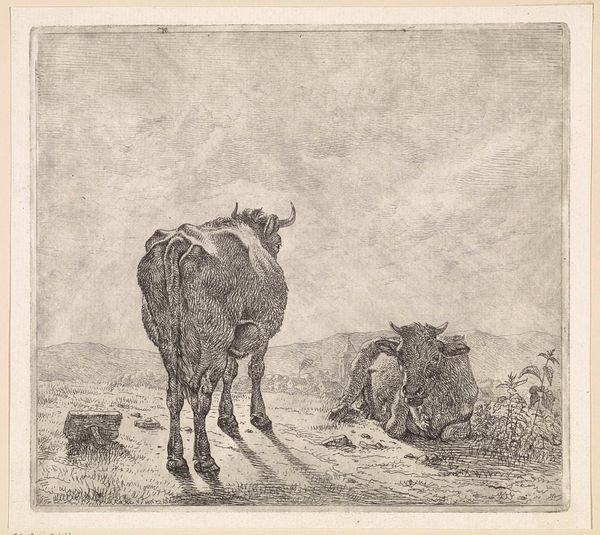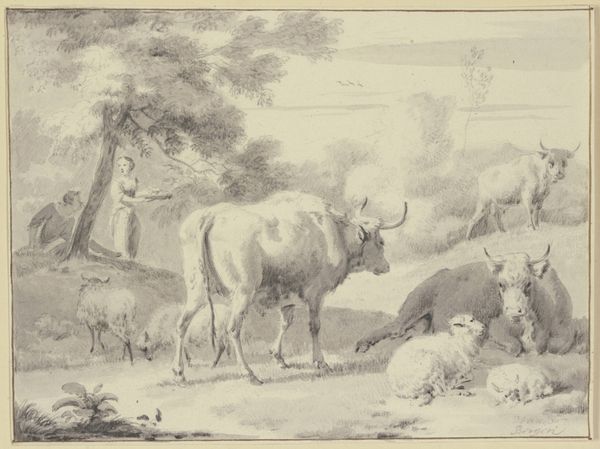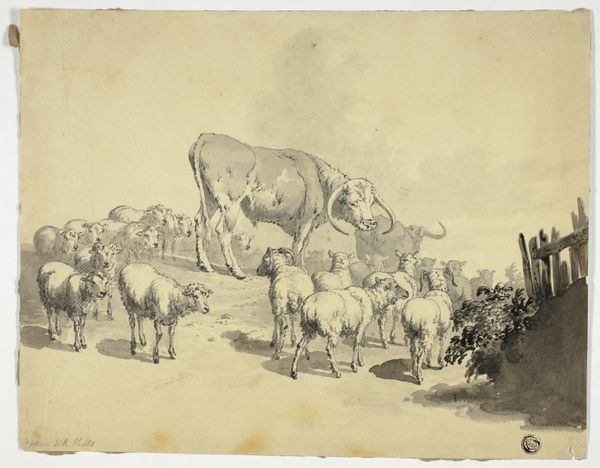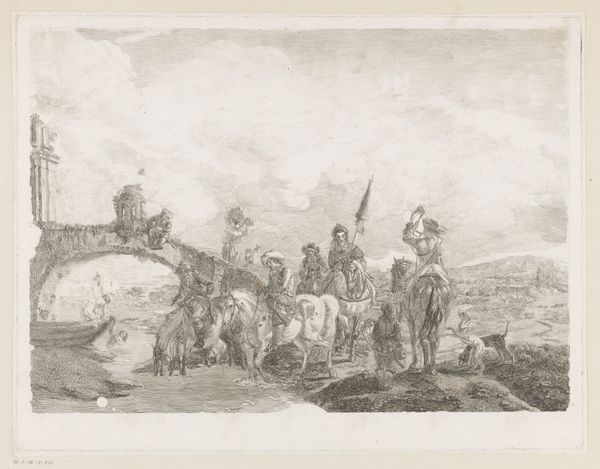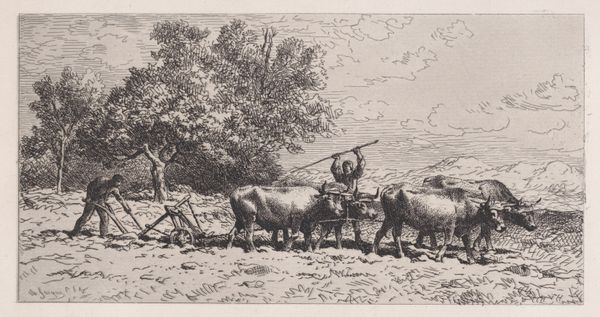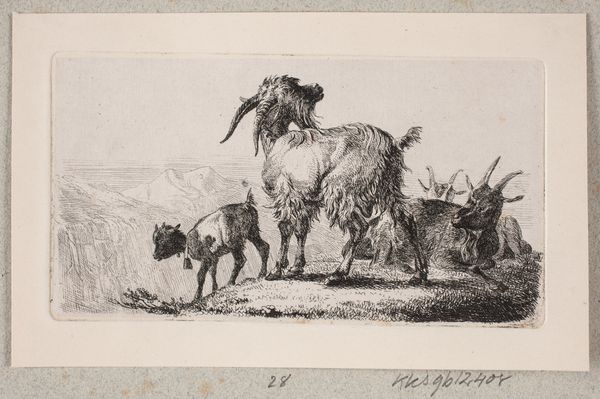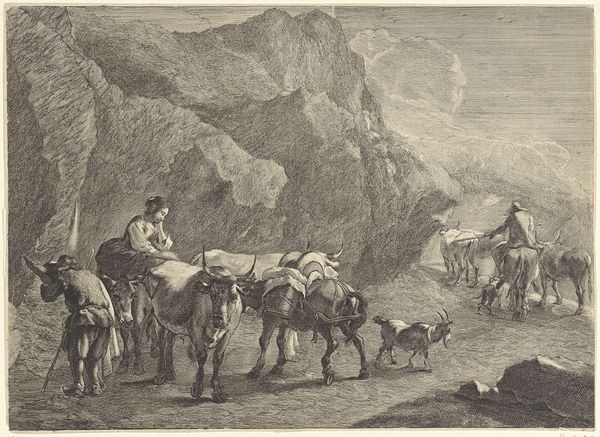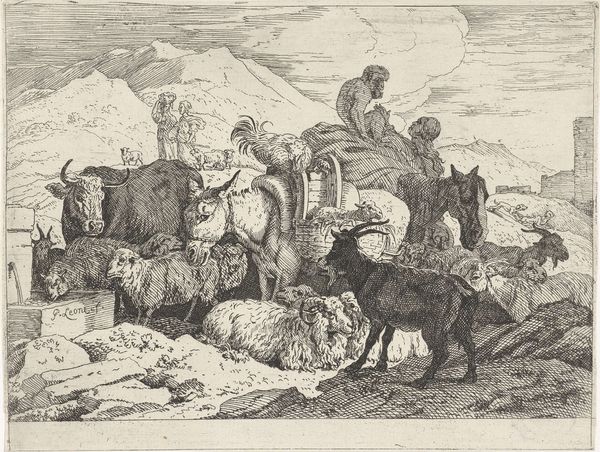
Fünf Ochsen, vier Schafe und zwei Ziegen bei dem schlafenden Hirten in einer Höhle
0:00
0:00
drawing, ink, indian-ink, chalk
#
landscape illustration sketch
#
drawing
#
netherlandish
#
light pencil work
#
baroque
#
pen sketch
#
pencil sketch
#
personal sketchbook
#
ink
#
ink drawing experimentation
#
indian-ink
#
pen-ink sketch
#
chalk
#
sketchbook drawing
#
14_17th-century
#
storyboard and sketchbook work
#
sketchbook art
Copyright: Public Domain
This drawing at the Städel Museum is by Willem Romeyn, though its exact date remains unknown. Romeyn has created a monochromatic landscape using primarily brown and gray washes. Note how the composition is structured around the cave's opening, framing the distant landscape. The foreground is densely populated with livestock and a sleeping shepherd, creating a sense of depth and perspective. Romeyn's use of light and shadow models the forms of the animals, adding volume. The cave itself acts as a structural device, its rough texture and imposing scale contrasting with the smooth, rounded forms of the animals. This contrast creates a visual tension. The arrangement invites a semiotic reading. The shepherd's slumbering form might symbolize a certain pastoral idyll, but the cave’s imposing presence suggests a more complex interplay between nature, humanity, and their symbolic meanings. How might one interpret the relationship between the domesticated animals and the wild, untamed landscape beyond?
Comments
No comments
Be the first to comment and join the conversation on the ultimate creative platform.
